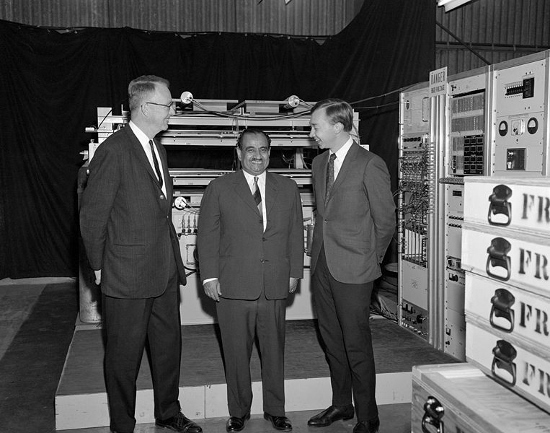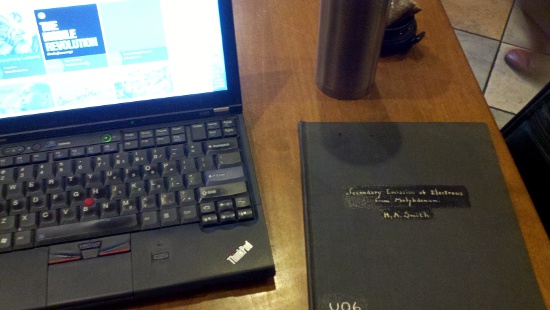Ashutosh Jogalekar has a response to my post from yesterday complaining about his earlier post on whether multiverses represent a philosophical crisis for physics. I suspect we actually disagree less than that back-and-forth makes it seem– he acknowledges my main point, which was that fundamental theoretical physics is a small subset of physics as a… Continue reading Reductionism Is Not Fundamentalism
Category: Theory
Repeat After Me: Particle Physics Is Not All of Physics
The very last section of the book-in-progress (at least the draft that’s with my editor right now…) is titled “Science Is Never Over,” and talks about how there are a nearly infinite number of phenomena that you can investigate scientifically. The universe is a never-ending source of amazement and wonder, with surprisingly rich dynamics in… Continue reading Repeat After Me: Particle Physics Is Not All of Physics
The Tricky Thing About Simulated Dynamics
In the previous post about simulating the attraction between sticky tapes using VPython, I ended with a teaser mentioning that there was a discrepancy between the simulation and the theoretical solution from directly solving the equations. The problem is kind of subtle, but clearly visible in this graph from that post: In this, we see… Continue reading The Tricky Thing About Simulated Dynamics
Simulated Tape and Universal Behavior
Having spent a lot of time solving equations related to sticky tape models, including trying to work solutions in my head while driving to Grandma and Grandpa’s with the kids, and making some measurements of real tapes, there was only one thing left to do: try simulating this problem in VPython. Because I’m a physics… Continue reading Simulated Tape and Universal Behavior
Keeping BEC Cold
I know I said there weren’t going to be physics posts for a while, but yesterday our Communications office passed along a media request about this paper on feedback cooling of BEC, from some sort of communications-person mailing list. I’d seen it talked up elsewhere– here, for example, so I banged out an email to… Continue reading Keeping BEC Cold
Finding That There’s Nothing to Find
In 1967, a team of scientists hauled a big pile of gear– electronics, particle detectors, a giant slab of iron– into the burial chamber at the base of one of the pyramids at Giza. This sounds like a scene from a science fiction or fantasy novel– throw in the fact that their first attempt was… Continue reading Finding That There’s Nothing to Find
One, Two, Many, Lots: Investigating the Start of Many-Body Physics
Two papers with a similar theme crossed my social media feeds in the last couple of days. You might think this is just a weird coincidence, but I’m choosing to take it as a sign to write about them for the blog. So, what are these papers, and what’s the theme? One is the final… Continue reading One, Two, Many, Lots: Investigating the Start of Many-Body Physics
Free, As In Energy
Via social media, John Novak cashes in a Nobel Betting Pool win from a while back, asking: Please explain to me the relationship between energy, entropy, and free energy. Like you would explain it to a two year old child. Why? There is a statistical algorithm called Expectation Maximization which is often explained in terms… Continue reading Free, As In Energy
Old Thesis Club: The Hyperfine Structure and Zeeman Effect for Mercury Resonance Line 2536.52A by Leo Wilson Scott, 1932
Having spent a bunch of time talking about heavy stuff in the science blogging community, let’s unwind a bit and kick the week off with a look back at an old Master’s thesis. This one is from 1932, and is almost certainly a draft copy, because it’s extremely cheaply bound in cardboard with the title… Continue reading Old Thesis Club: The Hyperfine Structure and Zeeman Effect for Mercury Resonance Line 2536.52A by Leo Wilson Scott, 1932
Old Thesis Club: Secondary Emission of Electrons from Molybdenum, by H.A. Smith, 1928
As noted in a previous post on Monte Carlo simulation in 1960, we recently came into possession of a large box of old Master’s theses. The bulk of these are from the 50’s and 60’s, but there are some going back much farther. As I pass these every day I’m in the office, I thought… Continue reading Old Thesis Club: Secondary Emission of Electrons from Molybdenum, by H.A. Smith, 1928





